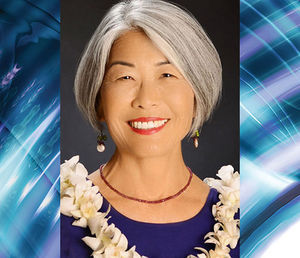What kind of place do you want Kauai to be in the next 20 years? The Draft General Plan before the County Council provides an excellent answer to that question: 1. A unique and beautiful place; 2. That is
What kind of place do you want Kauai to be in the next 20 years?
The Draft General Plan before the County Council provides an excellent answer to that question: 1. A unique and beautiful place; 2. That is sustainable (environmentally and economically); 3. Where people are healthy and resilient; and 4. Everyone has a fair opportunity to be the best they can be.
It’s hard to argue with that. But how do we get there?
It is clear that if we don’t better manage our growth, our island will be overwhelmed. Our environment and our lifestyle will be in jeopardy. The quality of the visitor experience will diminish, and local resentment could grow, putting the aloha spirit and our economy at risk. The cost of government and taxes will also increase.
This problem is neither new nor unique to Kauai. In the 1970s, Oregon’s governor, Tom McCall, made national headlines by saying, “Come visit, but don’t stay.”
Kauai’s overall growth is measured by “de facto” population: resident population plus the average daily visitor census (ADVC). Today’s resident population is over 72,000 and the ADVC fluctuates between about 25,000 to as high as 31,113 (last July) for a total de facto population at times exceeding 100,000.
Clearly we are already at — or exceeding — capacity. If this is not evident from our congested roads and overflowing visitor sites,it is confirmed by the Kauai Tourism Strategic Plan, put together by Kauai visitor industry representatives, which says: “ When the daily visitor count is over approximately 25,000, the island’s roads, parks, beaches and other infrastructure, in their current conditions, are taxed and the visitor experience and resident quality of life diminish. … Until the island’s infrastructure, including bus and shuttle service, is improved, the desirable range of visitors per day is within the range of 23,000 to 25,000.”
We ignore this report at our peril.
Besides increasing daily visitor counts, resort growth also fuels resident growth. As early as 1970, a key premise of the first Kauai General Plan was that “population (results) from employment.”
Once built, a hotel needs employees. If there are not enough local workers, the hotel will bring people from off-island, as they do today, either through internal transfers or off-island recruiting. Over the years, resorts have been a major driver of resident growth on Kauai.
The good news is that the county has the legal authority to control resort numbers. We may not be able to prohibit people from moving to Kauai, but the Planning Commission, the council and mayor can choose not to approve resort designations in the General Plan or resort 1 zonings.
Decision-makers may also remove existing resort designations if those designations will exceed the capacity of the island to handle such growth and resort zoning has not yet been granted. (“Resort designations” in the General Plan indicate planned future land uses and are a prerequisite for “resort zoning,” but do not give the developer any vested rights or entitlements which are said to come with resort zoning and zoning permits.)
The bad news is that over the years, the county has allowed far more resort zonings and general plan designations than the island and its infrastructure can handle. Today, we have 8,600 visitor rooms in operation, plus over 3,700 visitor rooms which have been zoned for resort but are not yet built, including Coco Palms and sites in Poipu, Princeville and the Coconut Plantation.
In addition to the 12,300-plus (8,600 + 3,700-plus) visitor rooms already built or approved, the existing General Plan contains resort designations at Nukolii, Waimea Plantation Cottages and Princeville Phase II that could add, at full build out, at least 3,000 more visitor rooms.
Because the zoning for the three resort designated areas is “Agriculture,” their resort designations could be legally removed based on infrastructure limitations. (In fact, the Draft General Plan does propose removing the resort designation at Nukolii. Of the two remaining designations, I am most sympathetic about Waimea Plantation Cottages, but with 250 resort rooms already permitted but not yet built on Gay and Robinson’s lands on the Westside, and 3,700-plus other units to be built islandwide, how will Kauai retain its rural character and the Westside remain the Westside?)
We must remove those resort designations if we want to achieve the future envisioned in the Draft General Plan. Otherwise, the developers will be able to apply for zoning, and once zoning is granted, it will add another 3,000-plus visitor rooms to the 3,700 rooms that are presently zoned resort but not yet built. This will be committing the island to a 75 percent increase in visitor units over the next 20 years!
Removing those resort designations is not about “no growth,” since zoning would remain for 3,700-plus additional visitor rooms—a potential 40 percent increase in visitor rooms on Kauai, which itself threatens Kauai’s sustainability. Nor would removal of those three designations bar those landowners from applying for general plan resort designations in the future, assuming infrastructure has improved.
If you are concerned, now is the time to speak up. The future of Kauai lies in balance. Submit testimony at CouncilTestimony@kauai.gov and stay tuned for other opportunities to testify. Every voice is needed. A democracy doesn’t work without active participation.
The future of Kauai is in our hands.
•••
JoAnn Yukimura is a member of the Kauai County Council.


